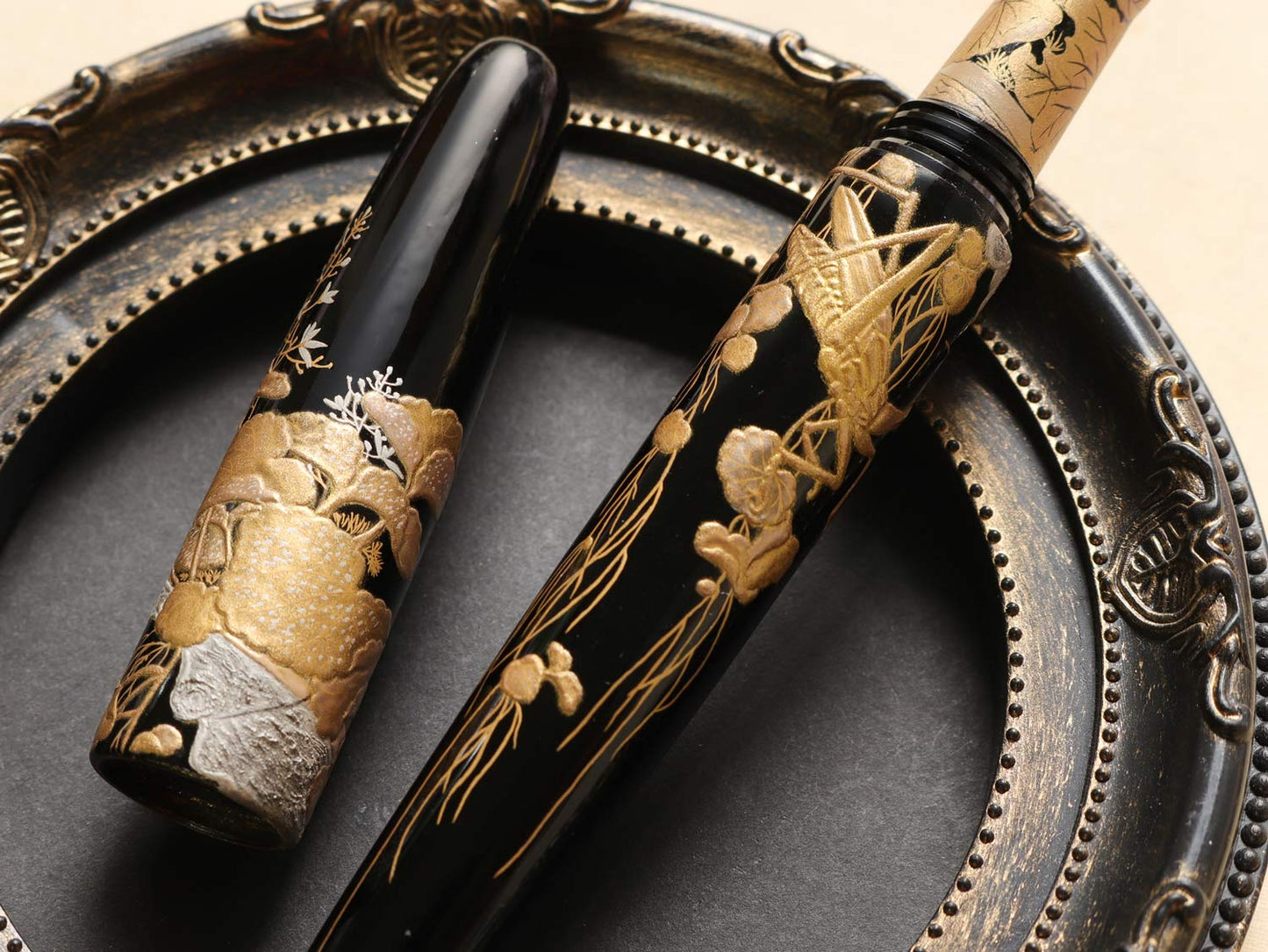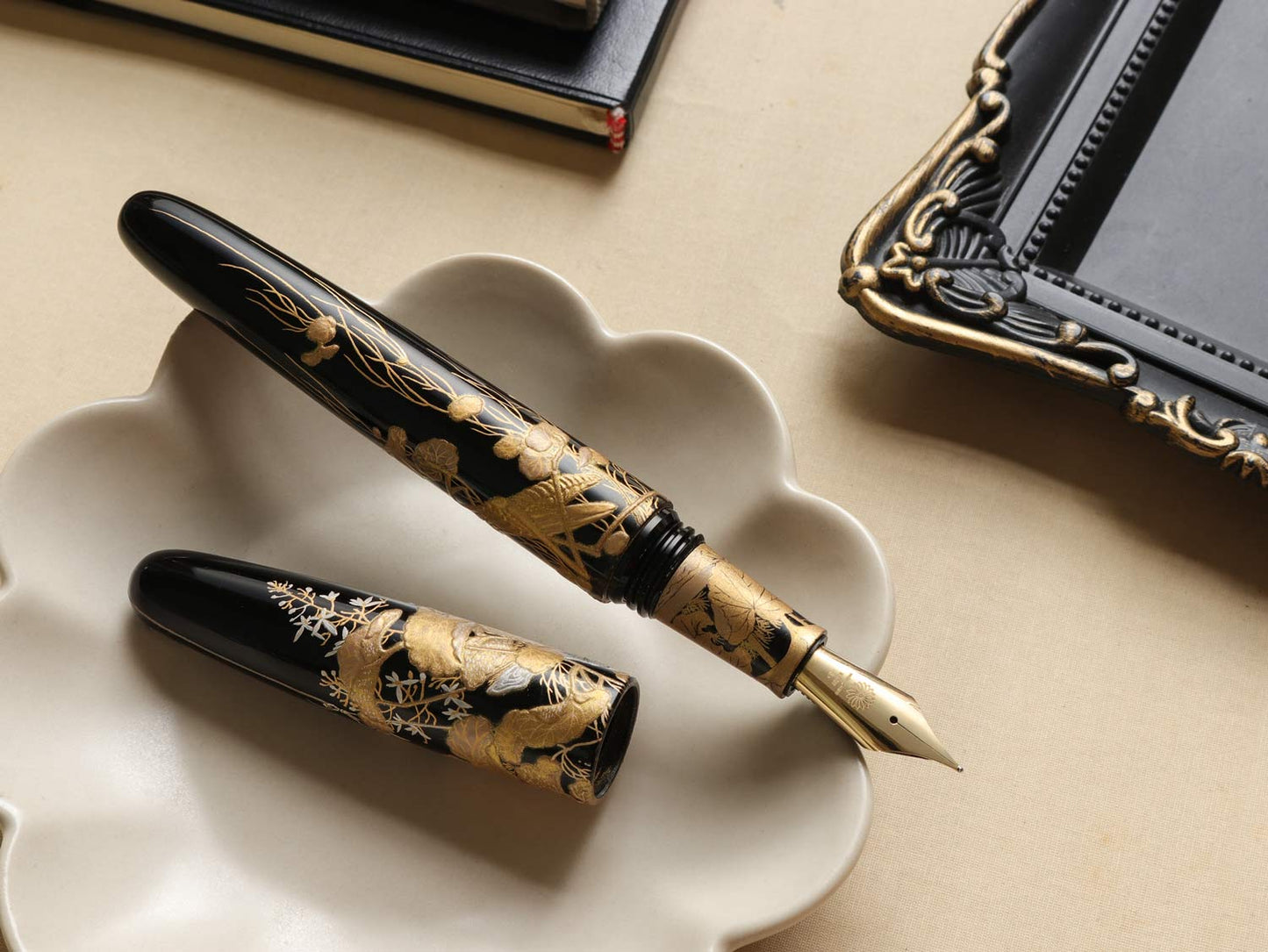Taka Maki-e - Flowers and Praying Mantis
Taka Maki-e - Flowers and Praying Mantis
Couldn't load pickup availability
Description
Description
Design Inspiration
The original name of this design is "Hanakusakamakiri" (花草蟷螂) in Japanese, is popular from the Edo period until the present. There are three ways of symbolism that Mantis brings. In classic Chinese metaphor, it says that even the weakest of mantis can face a strong enemy with courage. In East and Western cultures, mantis is associated with 'praying' because they curl their front leg in front of their chest.
Origins of Taka Maki-e
The birth of maki-e technology in Japan is traced back to the Shosoin treasure of the Nara period (A.C. 710-794). It stands as a hallmark technique of lacquer art that developed uniquely in Japan. The maki-e technique flourished during the Kamakura period and underwent refinement during the competitive atmosphere of the Muromachi period. Among the various styles of maki-e, Takamaki-e demands the most intricate skills. In this instance, Wancher has crafted a piece with profound affection, employing the "Takamaki-e" technique to present the epitome of beauty inherent in this rare Japanese craftsmanship.
Technique
True to the original words, "Taka" which means "Raised high". There are several other techniques for making Taka Maki-e such as "Urushi-age", "Sumiko-age" by using charcoal, and "Sabi-age" which uses gold powder generously while also very laborous. As a result, these Taka Maki-e fountain pens are made to be with three-dimensional with many delicate details. Only when you touch it with your hand, you can feel the true beauty, a wonderful masterpiece.
18K Nib
All Taka Maki-e pens come with an 18K gold nib to enhance your writing experience and the astonishing appearance of the traditional Maki-e art on this pen.
Natural Raw Urushi
Our Takamaki-e fountain pens are applied using natural Urushi which by characteristic has slightly less shine. Every early summer, raw Urushi is gathered from the deciduous tree known as "Urushinoki". This valuable plant yields only about 100-300 grams of raw Urushi liquid per year from each tree.
Specifications
Material: Ebonite
Art: Taka Maki-e
Filling mechanism: Converter or Cartridge (European International Standard)
Nib: #6 Wancher 18K gold & Rhodium-plated
Feed: Plastic only
Packaging
Traditional Japanese Wooden Box + Pen Kimono + Instructional Materials + Converter + Cartridge
Share











